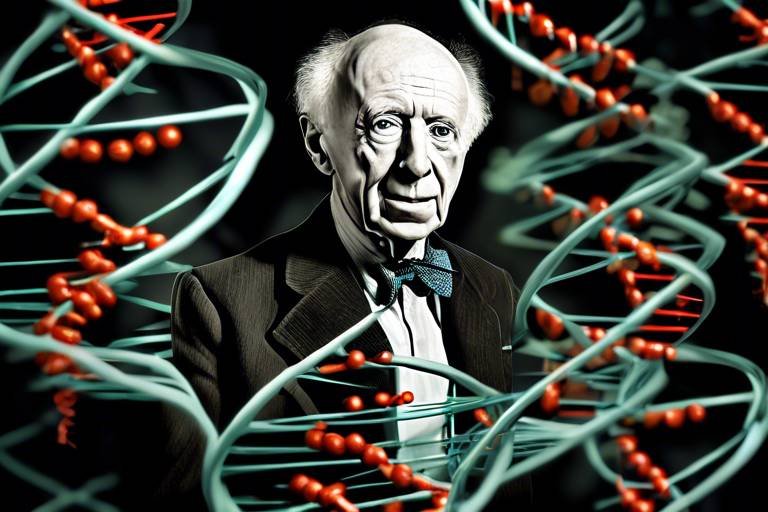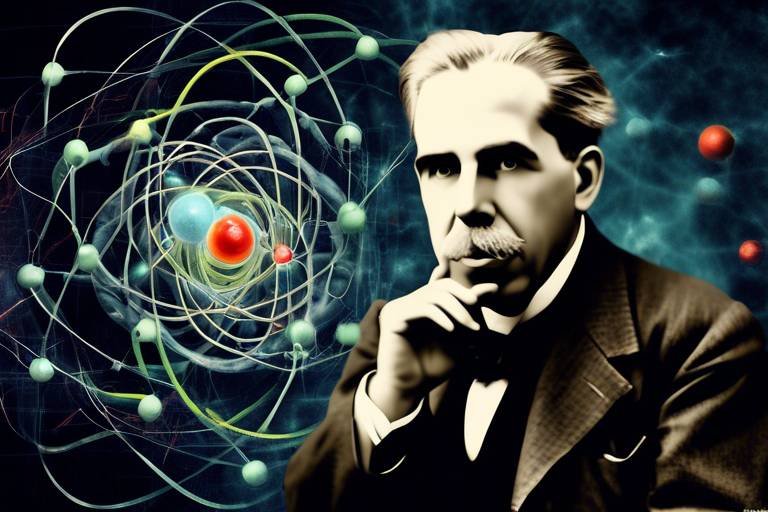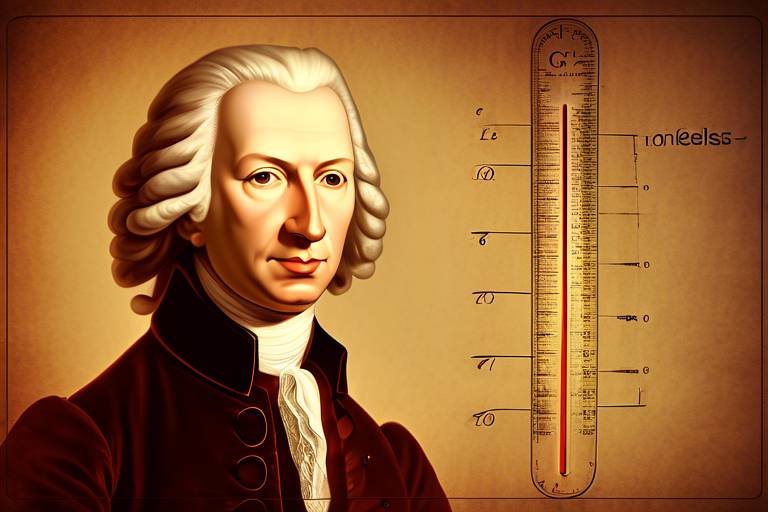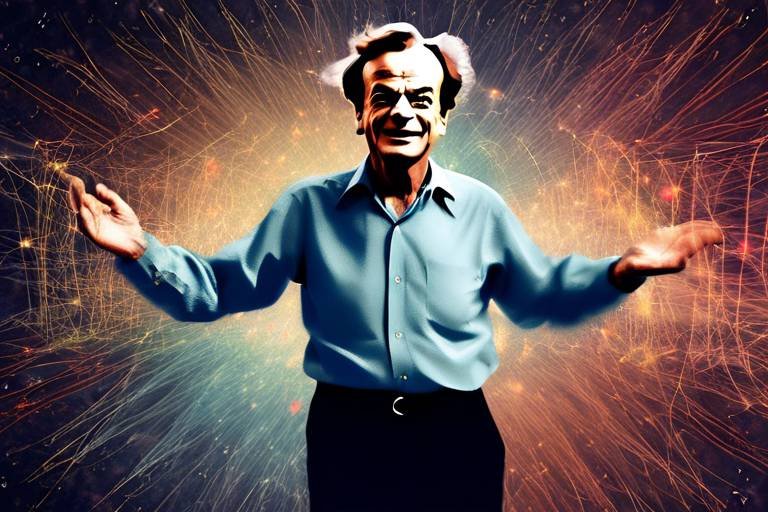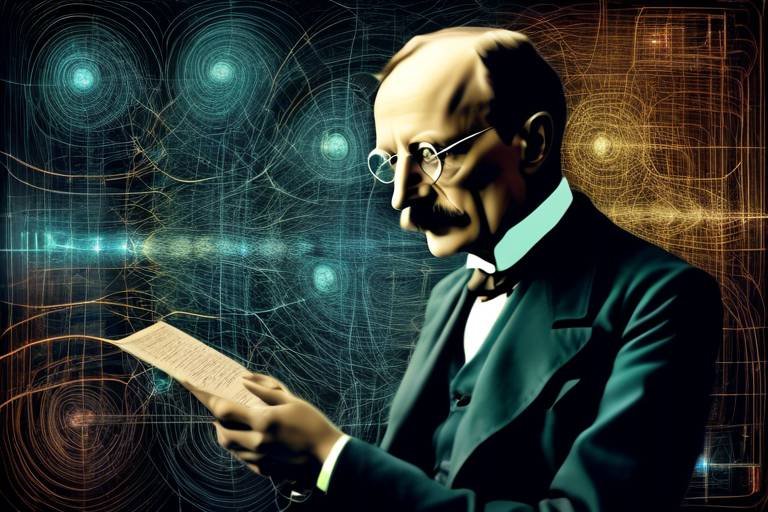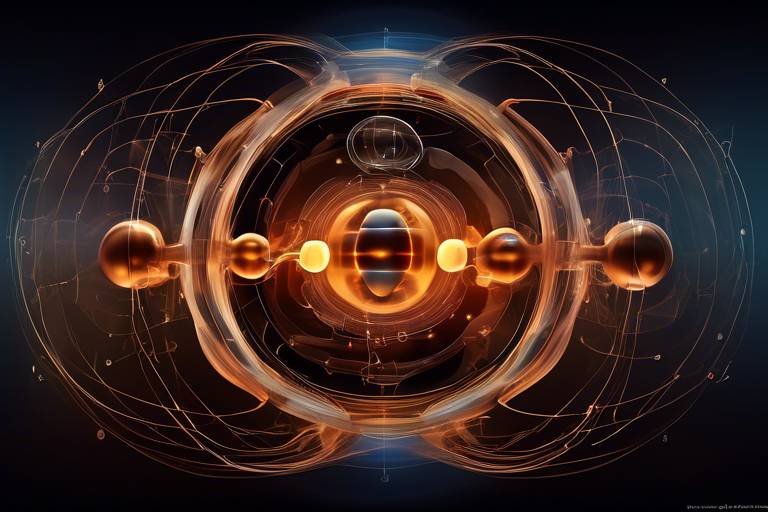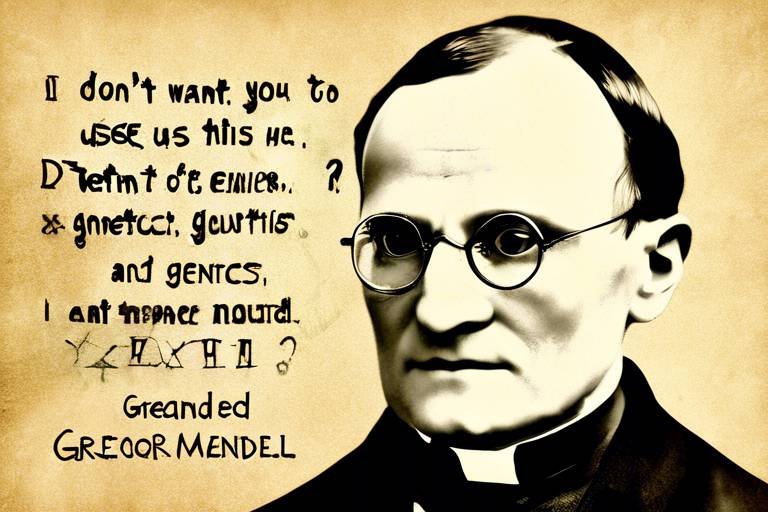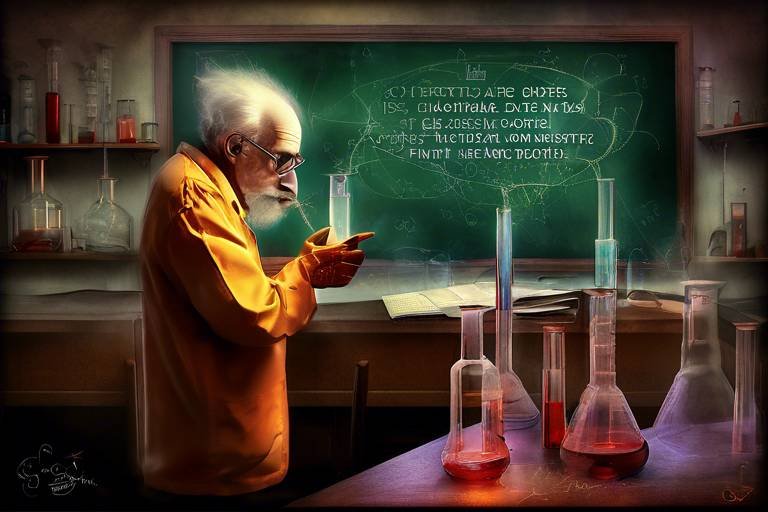The Life of Carl Jung and Analytical Psychology
Welcome to the fascinating world of Carl Jung, a name that resonates deeply in the realm of psychology. Born in 1875 in Switzerland, Jung's journey was anything but ordinary. His life and work have profoundly shaped our understanding of the human mind, making him one of the most influential figures in psychology. Jung's approach, known as analytical psychology, delves into the intricate layers of the psyche, exploring concepts such as the collective unconscious, archetypes, and the transformative process of individuation.
What sets Jung apart from his contemporaries, particularly Sigmund Freud, is his unique perspective on the unconscious mind. While Freud emphasized the role of sexuality and personal experiences, Jung believed in a broader, more universal unconscious that connects all humanity. This idea of the collective unconscious suggests that we share innate symbols and memories that shape our experiences and behaviors.
Throughout his life, Jung was not just a theorist; he was also a seeker of wisdom. He explored various disciplines, including philosophy, religion, and mythology, integrating these insights into his psychological framework. This interdisciplinary approach allowed him to create a rich tapestry of ideas that continue to influence fields beyond psychology, including art, literature, and spirituality.
As we delve deeper into Jung's life and theories, we will uncover how his concepts of archetypes and individuation provide valuable tools for personal growth and understanding. From the Hero's journey to the Shadow self, Jung's insights offer a roadmap for navigating the complexities of human existence. So, buckle up as we embark on this enlightening journey through the life of Carl Jung and the profound impact of analytical psychology!
- What is analytical psychology?
Analytical psychology, founded by Carl Jung, focuses on understanding the psyche through concepts such as the collective unconscious, archetypes, and individuation.
- How did Jung's theories differ from Freud's?
While Freud emphasized sexuality as the primary motivator of behavior, Jung proposed a broader understanding, including spiritual and cultural dimensions.
- What are archetypes?
Archetypes are universal symbols and themes that reside in the collective unconscious, influencing human behavior and experiences across cultures.
- What is individuation?
Individuation is the process of becoming aware of oneself and integrating various aspects of the personality, leading to psychological wholeness.

Early Life and Education
Carl Jung was born on July 26, 1875, in Kesswil, Switzerland, a quaint village nestled by the shores of Lake Constance. Growing up in a family steeped in tradition, his father was a Protestant minister, and his mother came from a line of influential thinkers. This unique background provided Jung with a rich tapestry of ideas and beliefs that would shape his future theories in psychology. From a young age, he exhibited a keen interest in the workings of the mind, often pondering questions that many of his peers would overlook. Can you imagine a child, instead of playing outside, engrossed in the mysteries of dreams and the human psyche?
Jung's education began in earnest at the University of Basel, where he initially studied medicine. However, it wasn't long before he found his true passion in psychology and philosophy. During his university years, he was influenced by a variety of intellectual currents, including philosophy, anthropology, and the burgeoning field of psychology. His fascination with the unconscious mind was ignited, leading him to explore the depths of human experience. In fact, he once remarked that "the psyche is a reality that is not to be denied," a testament to his belief in the importance of understanding the human mind.
Throughout his academic journey, Jung was exposed to various schools of thought. He delved into the works of prominent figures like Friedrich Nietzsche and Immanuel Kant, whose ideas on existence and morality left a lasting impression on him. He also became involved with the psychological community, joining forces with the influential psychiatrist Eugen Bleuler. This collaboration not only honed his skills but also opened doors to new ideas that would later influence his theories.
As Jung continued to develop his thoughts, he began to explore the relationship between psychology and spirituality. This exploration was partly fueled by his own experiences with dreams and visions, which he later considered essential to understanding the human condition. Jung's early life and education were not merely a series of academic pursuits; they were a profound journey of self-discovery that laid the groundwork for his groundbreaking contributions to psychology.
In summary, Jung's formative years were marked by a rich interplay of personal experiences, academic endeavors, and philosophical inquiries. His childhood in Switzerland, coupled with his education at the University of Basel, set the stage for a lifelong quest to understand the complexities of the human psyche. As we delve deeper into his life, we'll uncover how these early influences shaped his revolutionary ideas and led to the establishment of analytical psychology.
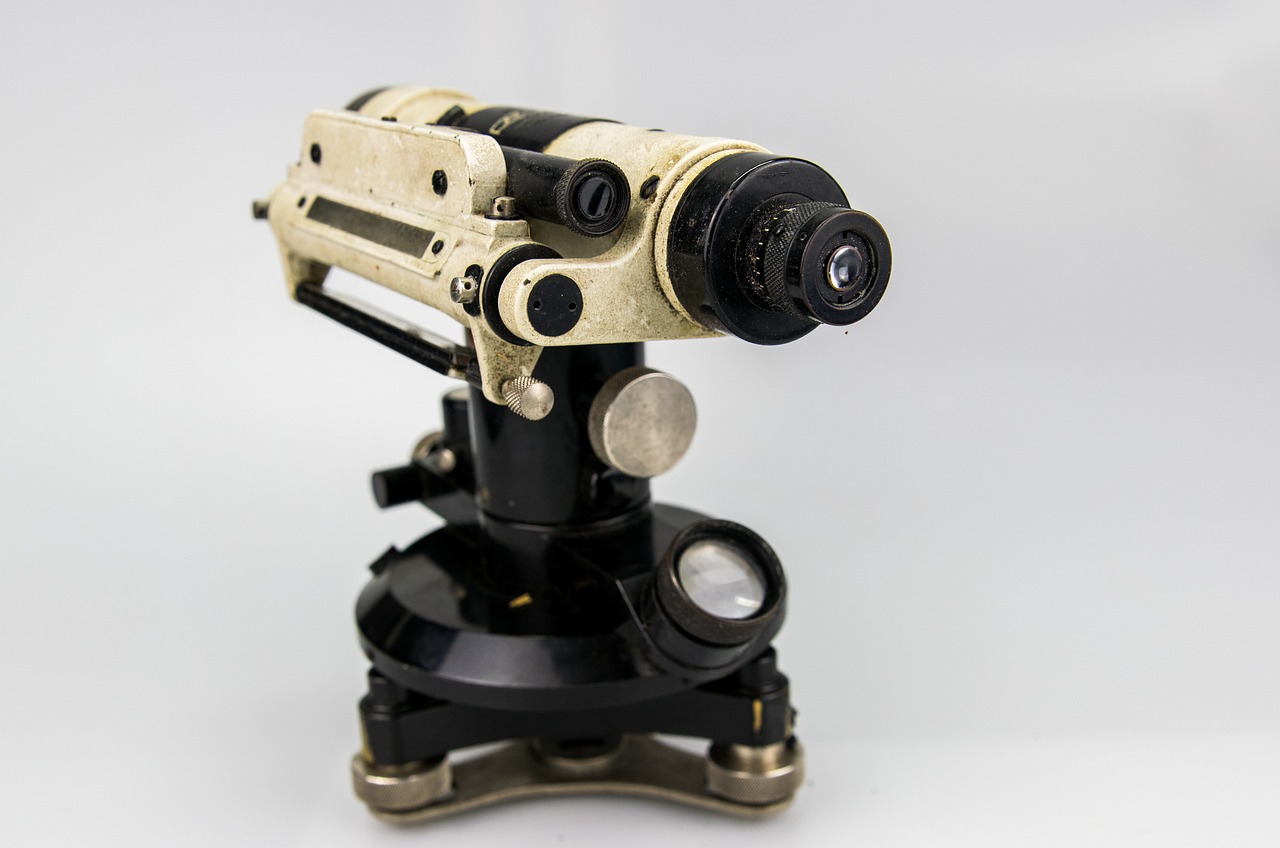
Jung's Break from Freud
The relationship between Carl Jung and Sigmund Freud was not just a professional alliance; it was a profound intellectual partnership that would eventually lead to a dramatic split. Initially, Jung was captivated by Freud's theories, particularly the idea that the unconscious mind plays a critical role in shaping human behavior. However, as Jung delved deeper into his own explorations of the psyche, he began to notice significant differences in their perspectives. This divergence marked the beginning of Jung's journey toward developing his own psychological theories, ultimately leading to the establishment of analytical psychology.
One of the key factors that contributed to Jung's break from Freud was their differing views on the nature of the unconscious. Freud primarily focused on the personal unconscious, which he believed was shaped by individual experiences and repressed desires. In contrast, Jung introduced the concept of the collective unconscious, a deeper layer of the psyche that contains universal symbols and archetypes shared among all humans. This fundamental shift in understanding the unconscious was not merely academic; it represented a philosophical rift regarding the very nature of human existence and motivation.
Moreover, their contrasting views on sexuality played a crucial role in their ideological split. Freud emphasized sexuality as the primary driver of human behavior, suggesting that unresolved sexual conflicts could lead to psychological issues. Jung, however, argued for a more expansive view of motivation, incorporating spiritual and cultural dimensions into his understanding of the psyche. He believed that while sexuality is important, it is not the sole determinant of human behavior. This broader perspective allowed Jung to explore various aspects of the human experience, including myth, religion, and art, which he felt were essential for a complete understanding of the human condition.
As their differences became more pronounced, Jung felt increasingly constrained by Freud's theories. He sought to expand the scope of psychology beyond the confines of Freud’s framework. This quest for intellectual freedom ultimately led to a formal break between the two in 1913. The split was not without its emotional toll; both men respected each other deeply, yet their paths had diverged so significantly that reconciliation became impossible. Jung's departure marked the beginning of a new chapter in psychology, one that would explore the depths of the human soul in ways that Freud had not envisioned.
In summary, Jung's break from Freud was not merely a disagreement over theories; it was a profound shift in understanding the human psyche. The differences in their views on the unconscious, motivation, and the role of sexuality laid the groundwork for Jung's development of analytical psychology, which continues to influence the field today. This break allowed Jung to forge his own path, leading to groundbreaking concepts that would change the landscape of psychology forever.
- What were the main reasons for Jung's break from Freud?
Jung's break from Freud was primarily due to their differing views on the unconscious, the role of sexuality in human behavior, and Jung's desire for intellectual freedom to explore broader aspects of psychology.
- What is the collective unconscious?
The collective unconscious is a concept introduced by Jung that refers to shared memories and archetypes that are universal across humanity, contrasting with Freud's focus on the personal unconscious.
- How did Jung's theories differ from Freud's?
While Freud emphasized sexuality as a primary motivator of behavior, Jung proposed a more holistic view that included spiritual and cultural dimensions, allowing for a richer understanding of human experience.

Key Differences in Theories
When we dive into the world of psychology, the contrast between the theories of Carl Jung and Sigmund Freud is nothing short of fascinating. These two titans of psychological thought had a relationship that began with mutual admiration but eventually unraveled into a significant ideological split. At the heart of their disagreement were fundamental differences in their understanding of the human psyche and its motivations.
One of the most significant distinctions between Jung and Freud lies in their views on the unconscious mind. Freud saw the unconscious primarily as a repository of repressed desires and unresolved conflicts, particularly those related to sexuality. In contrast, Jung broadened this concept, introducing the idea of the collective unconscious. This notion posits that beneath our personal unconscious lies a deeper layer shared among all humans, filled with archetypes and universal symbols. It’s like comparing a personal diary to a vast library of human experience—Freud focused on the individual entries, while Jung sought to understand the entire collection.
Moreover, the two psychologists diverged in their views on sexuality. Freud’s theories emphasized sexual drives as the primary motivators of human behavior. He famously suggested that unresolved sexual tensions could lead to neurosis. Jung, however, challenged this perspective, arguing that human motivation is much more complex. He proposed that spirituality, creativity, and personal growth are equally significant forces driving human behavior. To Jung, our motivations are like a tapestry woven from many threads, not just the singular thread of sexuality.
Another area of difference is how they interpreted dreams. Freud considered dreams as a window into our repressed desires, often laden with sexual meaning. Jung, on the other hand, viewed dreams as a means of communicating with the unconscious. He believed they could provide insights into our personal development and help us confront our inner conflicts. For Jung, dreams were not merely reflections of our waking life but rather profound messages that could guide us on our journey of individuation.
In summary, the key differences in theories between Jung and Freud can be encapsulated in the following table:
| Aspect | Freud | Jung |
|---|---|---|
| View of the Unconscious | Personal unconscious focused on repressed desires | Collective unconscious shared among all humans |
| Motivation | Primarily sexual drives | Complex interplay of sexuality, spirituality, and creativity |
| Dream Interpretation | Repressed desires and sexual meanings | Messages from the unconscious guiding personal development |
These differences highlight how both Jung and Freud contributed uniquely to the field of psychology. Their contrasting perspectives not only shaped their respective theories but also paved the way for future explorations into the depths of the human mind. Understanding these differences is crucial for anyone interested in the evolution of psychological thought and its implications on therapy and personal growth.

Freud's Emphasis on Sexuality
Sigmund Freud, often hailed as the father of psychoanalysis, placed a significant emphasis on sexuality as the cornerstone of human behavior. His theories suggested that sexual drives, particularly those stemming from childhood experiences, were the primary motivators of our actions and thoughts. Freud believed that unresolved sexual conflicts could lead to neuroses, influencing everything from our dreams to our interpersonal relationships. This perspective was revolutionary at the time, as it challenged the prevailing norms and opened up a dialogue about the complexities of human desire and motivation.
Freud's views can be summarized in several key points:
- Libido as a Driving Force: Freud posited that the libido, or sexual energy, is a fundamental driving force behind human behavior. He argued that our actions are often influenced by repressed sexual desires.
- Oedipus Complex: One of Freud's most controversial theories, the Oedipus Complex, suggests that children experience unconscious sexual desires for their opposite-sex parent while feeling rivalry towards their same-sex parent. This complex forms a crucial part of his understanding of human development.
- Dream Interpretation: Freud believed that dreams are a reflection of our deepest desires, many of which are sexual in nature. He developed a method of dream analysis to uncover these hidden meanings, asserting that dreams serve as a window into our unconscious mind.
However, Carl Jung, Freud's protégé turned critic, challenged this singular focus on sexuality. Jung argued that while sexual drives are indeed significant, they do not encompass the entirety of human motivation. He introduced a broader perspective, emphasizing the importance of spiritual and cultural factors in shaping human behavior. Jung believed that understanding the complexities of the human psyche required more than just a focus on sexual impulses; it necessitated an exploration of the collective unconscious and the archetypes that reside within it.
Jung's departure from Freud's theories marked a pivotal moment in psychology, leading to the development of analytical psychology. This shift allowed for a more holistic understanding of the human experience, incorporating not only sexuality but also the myriad of psychological and spiritual dimensions that drive us. In this way, Jung's ideas have paved the way for a more comprehensive exploration of what it means to be human, ultimately enriching the field of psychology.

Jung's Concept of the Unconscious
When we dive into , we find ourselves exploring a profound and intricate landscape of the human psyche. Unlike Freud, who emphasized the personal unconscious filled with repressed memories and desires, Jung introduced the revolutionary idea of the collective unconscious. This concept posits that beyond our personal experiences, there exists a deeper layer of the unconscious that is shared among all humans. Imagine it as a vast ocean of memories, symbols, and archetypes that span across time and cultures, waiting to be tapped into by individuals.
At the heart of Jung's theory is the belief that this collective unconscious houses archetypes, which are universal symbols and themes that resonate with all people, regardless of their background. These archetypes manifest in our dreams, myths, and even our art. For instance, the Hero archetype can be seen in countless stories, from ancient myths to modern movies, representing the journey of overcoming adversity. Similarly, the Shadow archetype embodies the darker aspects of our personality that we often try to ignore or suppress. Jung argued that recognizing and integrating these archetypes is crucial for personal growth and self-awareness.
Jung believed that the collective unconscious significantly influences our behavior and thoughts, often in ways we are not consciously aware of. For example, when we experience fear or anxiety, it may not just stem from our personal experiences but can also be a reflection of shared human fears that have been passed down through generations. This perspective encourages us to look beyond our individual experiences and consider the broader human experience, fostering a deeper understanding of ourselves and others.
Furthermore, Jung's concept of the unconscious encourages a journey of self-discovery. Engaging with the collective unconscious can lead to profound insights and healing. In Jungian therapy, clients are often guided to explore their dreams and unconscious material, allowing them to confront their shadows and integrate various aspects of their personality. This process not only aids in personal development but also contributes to a greater sense of connectedness with humanity as a whole.
In summary, Jung's concept of the unconscious is a rich tapestry woven from the threads of individual and collective experiences. It invites us to explore the depths of our psyche, embrace our inner archetypes, and embark on a journey toward self-realization. By doing so, we can uncover the hidden motivations that drive our behavior and cultivate a more profound understanding of ourselves and our place in the world.
- What is the collective unconscious?
The collective unconscious is a term coined by Jung to describe the part of the unconscious mind that is shared among all humans, containing memories, symbols, and archetypes that transcend individual experiences.
- How do archetypes influence our lives?
Archetypes, as universal symbols, influence our thoughts, behaviors, and experiences. They can manifest in dreams, cultural narratives, and personal development, helping us understand our motivations and struggles.
- What role does the shadow play in Jungian psychology?
The shadow represents the repressed and darker aspects of our personality. Confronting and integrating the shadow is essential for personal growth and achieving psychological wholeness.
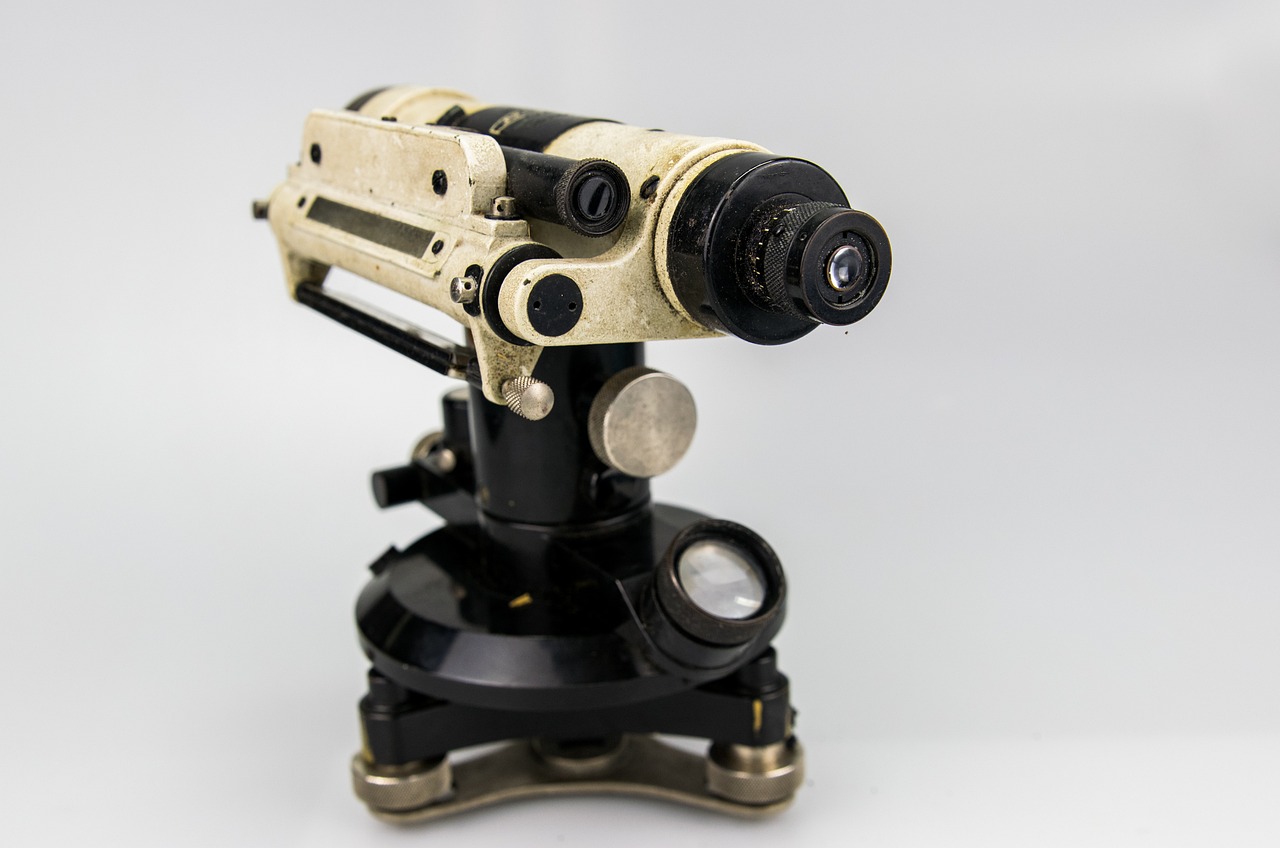
Impact on Modern Psychology
When we think about the landscape of modern psychology, it's hard to ignore the profound influence that Carl Jung has had on the field. His theories, particularly those surrounding the concepts of archetypes and the collective unconscious, have not only shaped therapeutic practices but have also permeated various aspects of culture and society. Jung's approach encourages a more holistic understanding of human behavior, moving beyond the mere mechanics of the mind to explore the deeper, often hidden layers of our psyche.
One of the most significant impacts Jung had on modern psychology is the integration of spirituality and personal growth into therapeutic practices. Unlike many of his contemporaries, Jung believed that understanding the self was essential for psychological healing. This has led to the emergence of various therapeutic modalities that emphasize self-exploration and personal development, such as humanistic psychology and transpersonal psychology. Therapists today often draw from Jungian principles to help clients navigate their inner worlds, leading to a more meaningful and enriching therapeutic experience.
Moreover, Jung's exploration of archetypes has provided a framework for understanding recurring patterns in human behavior. These archetypes—universal symbols that represent fundamental human experiences—play a crucial role in therapy. For instance, when clients identify with the Hero or confront their Shadow, they can gain insight into their challenges and motivations. This process not only fosters self-awareness but also encourages clients to embrace their complexities. The following table illustrates some common archetypes and their significance:
| Archetype | Description |
|---|---|
| Hero | Represents courage and the pursuit of a noble cause. |
| Shadow | Embodies the darker aspects of personality that are often repressed. |
| Wise Old Man/Woman | Symbolizes wisdom, guidance, and knowledge. |
| Mother | Represents nurturing, care, and unconditional love. |
In addition to therapeutic practices, Jung's ideas have influenced fields such as art, literature, and even marketing. The concept of the collective unconscious has inspired countless artists and writers to explore shared human experiences and emotions in their work. By tapping into these universal themes, creators can resonate with audiences on a deeper level, bridging the gap between individual and collective experiences.
Furthermore, the rise of depth psychology—a branch of psychology rooted in Jungian principles—has paved the way for a more nuanced understanding of mental health. This approach encourages individuals to delve into their unconscious, uncovering hidden motivations and unresolved conflicts. As a result, modern psychology is increasingly recognizing the importance of integrating both conscious and unconscious processes in understanding human behavior.
In conclusion, Carl Jung's contributions to psychology extend far beyond his lifetime. His ideas continue to inspire therapists, artists, and thinkers alike, creating a rich tapestry of understanding that informs our perception of the human experience. Whether it's through the lens of therapy or the exploration of cultural narratives, Jung's legacy is a testament to the enduring quest for self-discovery and psychological wholeness.
- What is the collective unconscious?
The collective unconscious is a concept introduced by Jung that refers to the part of the unconscious mind shared by all humans, containing universal experiences and archetypes.
- How do archetypes influence our lives?
Archetypes shape our behaviors and perceptions, providing a framework through which we can understand our actions and motivations in relation to universal human experiences.
- What is individuation?
Individuation is the process of integrating different aspects of the self, leading to greater self-awareness and psychological wholeness.

Archetypes and the Collective Unconscious
The concept of archetypes and the collective unconscious forms the bedrock of Carl Jung's analytical psychology. Imagine a vast library filled with stories, symbols, and motifs that have been passed down through generations—this is akin to the collective unconscious. It's a reservoir of shared human experiences that transcend individual lives and cultures. Jung believed that these archetypes are innate, universal symbols that shape our perceptions, behaviors, and dreams.
Archetypes can be thought of as the characters in the great play of life, each representing a fundamental aspect of the human experience. Some of the most recognized archetypes include:
- The Hero: Represents courage, determination, and the quest for self-discovery.
- The Shadow: Embodies the darker, repressed parts of the psyche that we often ignore.
- The Wise Old Man/Woman: Symbolizes wisdom, guidance, and the search for meaning.
- The Anima/Animus: Represents the feminine side of a man and the masculine side of a woman, promoting balance in personality.
These archetypes not only influence personal development but also resonate in our cultural narratives, literature, and art. They serve as a bridge connecting individual experiences to a broader human story. For instance, the Hero’s journey is a common theme in mythology and modern storytelling, reflecting our innate desire to overcome challenges and grow.
Now, what about the collective unconscious? This concept goes beyond the individual psyche. It's a shared layer of consciousness that houses the memories, experiences, and archetypes of humanity as a whole. Jung argued that while our personal unconscious is shaped by our unique experiences, the collective unconscious is universal and timeless. It’s like a vast ocean of human experience, where every wave represents a shared memory or archetype that influences our thoughts and actions.
Understanding archetypes and the collective unconscious is crucial for personal growth and self-awareness. By recognizing these patterns within ourselves, we can better navigate our emotions and relationships. Jungian therapy often explores these themes, helping individuals uncover the archetypes that resonate with their personal journeys and encouraging them to integrate these insights into their lives.
In summary, Jung's ideas about archetypes and the collective unconscious provide a profound framework for understanding the complexities of human behavior. They remind us that we are not alone in our struggles or triumphs; rather, we are part of a larger narrative that connects us all. By tapping into these universal symbols, we can embark on a transformative journey towards self-discovery and psychological wholeness.

Understanding Archetypes
Archetypes are more than just abstract concepts; they are the fundamental building blocks of our shared human experience. Imagine them as the universal symbols that resonate deeply within our psyche, influencing our thoughts, emotions, and behaviors. Carl Jung proposed that these archetypes reside in the collective unconscious, a part of our unconscious mind that is shared among all humans, transcending individual experiences and cultural differences.
To better understand archetypes, consider them as characters in a story that play crucial roles in the narrative of our lives. They help shape our identities and inform our choices. For instance, the Hero archetype represents the quest for self-discovery and personal growth, while the Shadow archetype embodies the darker, hidden aspects of ourselves that we often struggle to confront. These archetypes not only appear in dreams and fantasies but also manifest in myths, legends, and cultural narratives throughout history.
Here are some key archetypes identified by Jung that illustrate their significance:
- The Hero: Represents courage and the journey towards enlightenment.
- The Shadow: Symbolizes the repressed, darker aspects of the personality.
- The Anima/Animus: Embodies the feminine side of a man and the masculine side of a woman, representing balance.
- The Wise Old Man: Represents wisdom and guidance, often appearing as a mentor figure.
- The Trickster: Challenges the status quo and brings about change through chaos and humor.
These archetypes serve as a lens through which we can view our lives and the world around us. By recognizing the archetypes that resonate with us, we can gain valuable insights into our motivations, fears, and aspirations. For example, when we identify with the Hero archetype, we may feel compelled to take on challenges and strive for personal growth, while acknowledging our Shadow can lead to greater self-awareness and acceptance.
Furthermore, archetypes are not static; they evolve as we do. As we progress through different stages of life, the archetypes we relate to may shift, reflecting our changing circumstances and inner development. This dynamic nature of archetypes makes them a powerful tool for personal development and therapeutic practices, helping us navigate the complexities of our psychological landscape.
In conclusion, understanding archetypes is crucial for anyone interested in psychology, personal growth, or even storytelling. They provide a framework for interpreting our experiences and can guide us on our journey towards self-discovery and individuation. By embracing these universal symbols, we can better understand ourselves and connect with the shared human experience that binds us all.
- What are archetypes? Archetypes are universal symbols and themes that reside in the collective unconscious, influencing human behavior and experiences.
- How do archetypes affect our lives? They shape our identities, motivations, and choices, often appearing in dreams, stories, and cultural narratives.
- Can archetypes change over time? Yes, archetypes can evolve as we progress through different life stages and experiences.
- How can I identify my archetypes? Reflecting on your dreams, personal narratives, and the roles you play in your life can help you identify which archetypes resonate with you.

The Role of the Collective Unconscious
The concept of the collective unconscious is one of Carl Jung's most profound contributions to psychology. Unlike Freud's notion of the personal unconscious, which is shaped by individual experiences, the collective unconscious is a universal layer of the psyche shared by all humanity. Imagine it as a vast, hidden ocean, where each wave represents the shared memories, instincts, and archetypes that transcend individual lives. This ocean holds the timeless symbols and themes that resonate across cultures and epochs, influencing our thoughts, dreams, and behaviors in subtle yet significant ways.
At its core, the collective unconscious is composed of archetypes, which are innate, universal symbols and patterns that shape our understanding of the world. These archetypes manifest in various forms, such as myths, religious symbols, and cultural narratives. For instance, the archetype of the Hero appears in countless stories, from ancient myths to modern films, representing the journey of overcoming adversity and achieving greatness. Similarly, the Shadow archetype embodies the darker, often hidden aspects of our personality that we may reject or ignore. By acknowledging these archetypes, we can better understand our own behaviors and motivations.
The implications of the collective unconscious extend beyond individual psychology; they touch upon the very fabric of culture itself. When we examine art, literature, and folklore, we often find recurring themes and symbols that reflect the collective experiences of humanity. For example, consider how stories of creation, destruction, and renewal appear in various cultures worldwide. These shared narratives highlight the interconnectedness of human experiences, suggesting that we are all part of a larger tapestry woven from the threads of our shared unconscious.
Moreover, the collective unconscious plays a crucial role in shaping our personal identity. As we navigate through life, we often draw upon these universal symbols to make sense of our experiences. This is particularly evident in times of crisis or transformation, where individuals may find solace in archetypal narratives that resonate deeply with their struggles. By tapping into the collective unconscious, we can gain insights into our personal challenges and discover paths toward healing and growth.
In therapy, Jungian practitioners often utilize the concept of the collective unconscious to facilitate self-discovery and healing. By exploring archetypal themes in dreams and personal narratives, clients can uncover hidden aspects of their psyche and integrate them into their conscious awareness. This process not only fosters personal growth but also connects individuals to the broader human experience, reminding us that we are not alone in our struggles.
In summary, the collective unconscious serves as a powerful reservoir of shared human experiences, influencing both individual psychology and cultural phenomena. By understanding and engaging with this profound aspect of Jungian thought, we can unlock deeper insights into our own lives and the world around us.
- What is the collective unconscious?
The collective unconscious is a part of the unconscious mind that is shared among all humans, containing universal memories, symbols, and archetypes.
- How does the collective unconscious influence behavior?
It influences behavior by shaping our perceptions, emotions, and actions through archetypal symbols that resonate across cultures.
- Can the collective unconscious be accessed in therapy?
Yes, therapists can help clients explore their dreams and personal narratives to access insights from the collective unconscious for personal growth.

The Process of Individuation
Individuation is a fundamental concept in Jungian psychology, representing the journey toward achieving a fully realized self. Think of it as a personal quest, much like a hero's journey in a story, where the protagonist must face various challenges to discover their true identity. This process is not just about self-discovery; it involves integrating different parts of oneself that may have been neglected or repressed over time. Jung believed that by navigating through this inner landscape, individuals could achieve psychological wholeness and a deeper understanding of their place in the world.
At its core, the process of individuation consists of several stages, each requiring self-reflection, courage, and a willingness to confront uncomfortable truths. Here are some of the key stages:
- Confronting the Shadow: This stage involves recognizing and accepting the darker aspects of oneself, which Jung referred to as the "Shadow." It's about acknowledging traits and impulses that society often deems unacceptable.
- Integrating the Anima/Animus: Jung proposed that everyone has an inner feminine side (anima) and a masculine side (animus). The integration of these aspects leads to a more balanced personality.
- Embracing the Self: The final stage is about embracing the Self, which represents the totality of the psyche. This is where one achieves a harmonious balance between the conscious and unconscious mind.
These stages are not strictly linear; they often overlap and can be revisited throughout one’s life. Think of it like peeling an onion—each layer reveals something new, and sometimes you might need to go back to an earlier layer to gain a deeper understanding. This cyclical nature of individuation allows for continuous growth and transformation.
In the context of therapy, the individuation process plays a crucial role. Jungian therapists guide their clients through this journey, employing various techniques to facilitate self-discovery and healing. For instance, dream analysis is often used to unveil hidden aspects of the psyche, as dreams can serve as a window into the unconscious mind. By exploring these dreams, clients can confront their fears, desires, and unresolved conflicts, leading to profound insights.
Moreover, art and creative expression are also significant in the individuation process. Jung believed that engaging in creative activities allows individuals to tap into their unconscious, bringing forth symbols and archetypes that can aid in personal growth. Whether it’s painting, writing, or any form of artistic expression, these activities can illuminate the path toward self-realization.
Ultimately, the process of individuation is about becoming who you truly are. It’s about shedding societal expectations and embracing your authentic self. This journey, while challenging, is incredibly rewarding. It leads to a life that is not only more fulfilling but also aligned with your true values and purpose.
- What is individuation in Jungian psychology?
Individuation is the process of integrating different aspects of the self to achieve psychological wholeness, allowing individuals to discover their true identity. - How does the shadow relate to individuation?
The shadow represents the repressed or darker sides of our personality. Confronting and integrating the shadow is a crucial step in the individuation process. - Can individuation be achieved through therapy?
Yes, Jungian therapy often focuses on guiding clients through the individuation process, using techniques like dream analysis and creative expression to facilitate self-discovery.
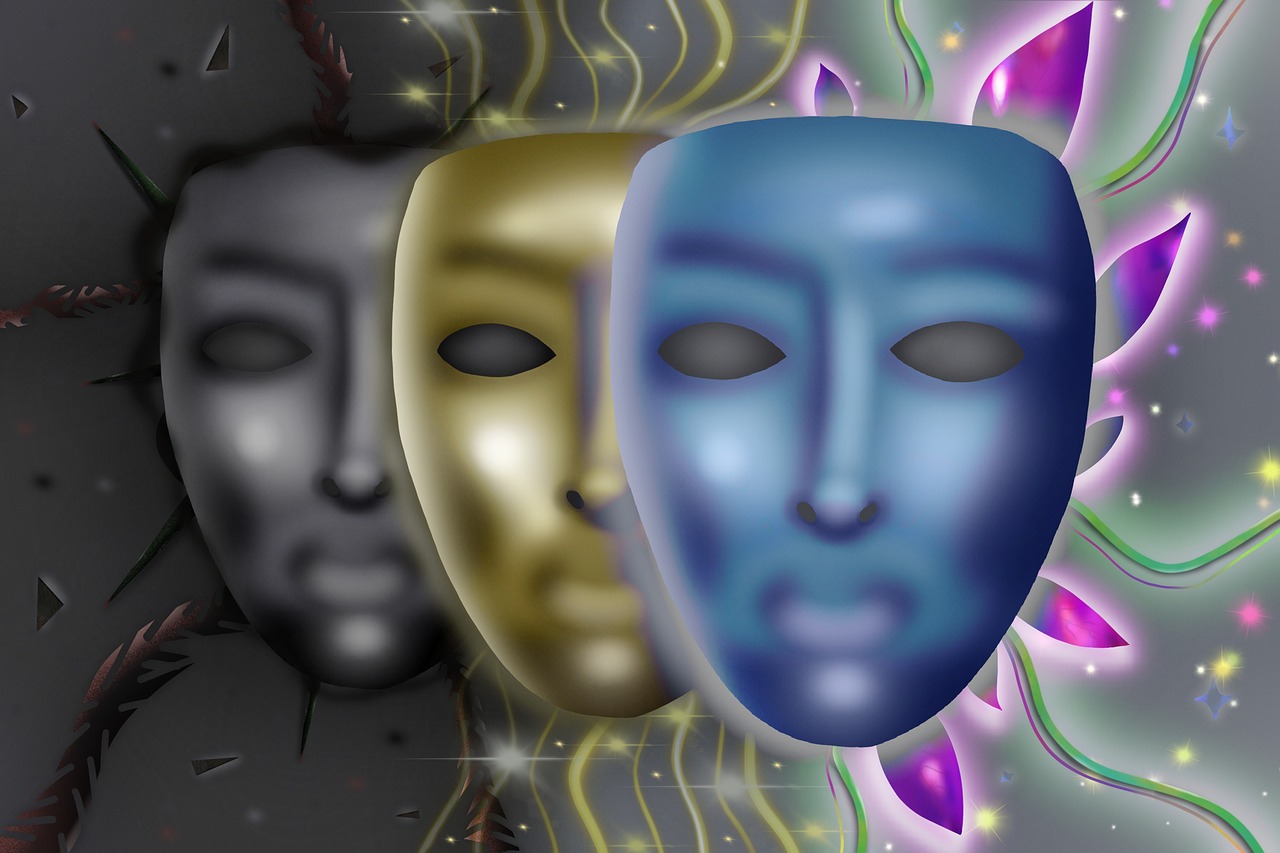
Stages of Individuation
The process of individuation is a profound journey towards self-realization and psychological wholeness, as envisioned by Carl Jung. This journey is not merely a one-time event; rather, it unfolds in several stages, each contributing to the development of a cohesive self. Understanding these stages can offer valuable insights into our personal growth and emotional health.
The first stage often involves confronting the Shadow, which represents the darker, repressed aspects of one's personality. Imagine the Shadow as a hidden room in the house of your psyche—dark, cluttered, and filled with items you’d rather not acknowledge. By shining a light on this room, you can begin to understand the parts of yourself that you have ignored or denied. This confrontation is crucial because it allows for the integration of these aspects, leading to a more balanced self.
Next, we move to the stage of Self-Discovery. This is where individuals start to explore their true selves, shedding societal expectations and external pressures. It’s like peeling an onion; each layer you remove reveals more of who you genuinely are. This stage can often be accompanied by feelings of confusion and uncertainty, but it’s essential for authentic growth.
Following self-discovery, the process of Integration takes place. Here, individuals begin to harmonize the various aspects of their personality, including both the light and dark sides. This stage is akin to assembling a jigsaw puzzle; each piece represents a different part of yourself, and as you fit them together, a clearer picture emerges. Integration is vital for achieving a sense of wholeness and authenticity.
Finally, the last stage is Self-Actualization, where individuals embrace their true selves and live in alignment with their core values and beliefs. At this point, one experiences a sense of inner peace and fulfillment, akin to reaching the summit of a mountain after a long and arduous climb. This stage signifies not just personal growth, but also the ability to contribute positively to the world around you.
In summary, the stages of individuation can be visualized as a journey through the following phases:
- Confronting the Shadow
- Self-Discovery
- Integration
- Self-Actualization
Each stage is interconnected and builds upon the previous one, leading to a richer understanding of oneself and a more profound connection with others. The individuation process is not just a psychological endeavor; it is a holistic journey that encompasses emotional, spiritual, and social dimensions. As individuals navigate through these stages, they often find that the journey itself is just as important as the destination.
Understanding these stages can empower individuals to embrace their unique paths, fostering personal growth and leading to a fulfilling life.
- What is individuation in Jungian psychology? Individuation is the process of integrating different aspects of the self to achieve psychological wholeness.
- How long does the individuation process take? The individuation process varies for each individual; it can take years or even a lifetime, depending on personal circumstances and experiences.
- Can individuation be achieved without therapy? While therapy can be beneficial, individuation can also occur through self-reflection, life experiences, and personal growth efforts.
- What role does the Shadow play in individuation? The Shadow represents the repressed parts of the self, and confronting it is crucial for achieving a balanced and integrated personality.
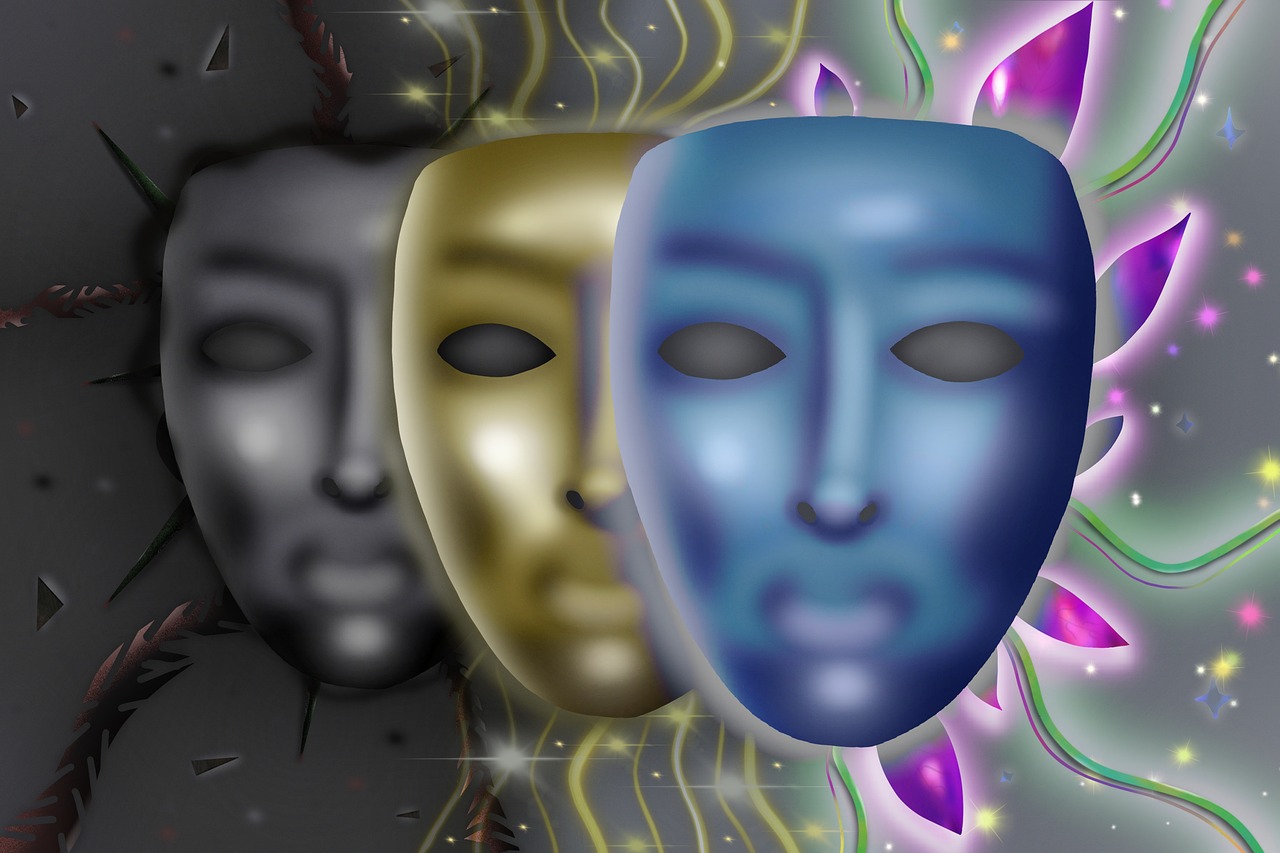
Individuation in Therapy
The concept of individuation plays a pivotal role in Jungian therapy, acting as a guiding star for both therapists and clients on their journey toward self-discovery and psychological wholeness. But what exactly does this mean in a therapeutic context? At its core, individuation is the process of integrating different aspects of the self, leading to a more cohesive and authentic identity. This journey is not just about self-improvement; it's about embracing the entirety of one's being, including the Shadow—the parts of ourselves we often hide or deny.
In therapy, the individuation process unfolds through various stages, each offering unique challenges and insights. Therapists create a safe space for clients to explore their unconscious thoughts and feelings, facilitating a dialogue between the conscious and unconscious mind. This dialogue often brings forth archetypal images and symbols that resonate with the individual's life experiences, providing valuable insights into their personal narrative.
To illustrate how individuation manifests in therapy, let's consider some key aspects:
- Confrontation of the Shadow: Clients are encouraged to face their Shadow, acknowledging the traits and impulses they may have repressed. This confrontation is crucial for personal growth, as it allows individuals to reclaim disowned parts of themselves.
- Integration of Archetypes: Therapists help clients recognize and integrate various archetypes, such as the Hero, the Wise Old Man, or the Anima/Animus. Understanding these archetypes can provide clarity in personal struggles and relationships.
- Dream Analysis: Dreams are a rich source of unconscious material. Jungian therapists often utilize dream analysis to uncover hidden meanings and facilitate the individuation process.
As clients progress through these stages, they often experience a profound sense of transformation. This transformation is not merely about solving problems; it's about becoming who they truly are. The individuation process encourages clients to embrace their uniqueness, leading to a more fulfilling and authentic life.
Moreover, the therapeutic relationship itself plays a significant role in this journey. A strong alliance between therapist and client fosters trust, allowing for deeper exploration of the self. The therapist acts as a guide, helping clients navigate the murky waters of their unconscious, illuminating paths that may have previously seemed daunting.
In conclusion, individuation in therapy is about more than just personal growth; it's about achieving a sense of wholeness. By embracing all facets of the self, individuals can lead richer, more meaningful lives. The journey may be challenging, but the rewards—self-acceptance, inner peace, and authenticity—are well worth the effort.
- What is individuation? Individuation is the process of integrating various aspects of the self to achieve psychological wholeness.
- How does individuation occur in therapy? It occurs through stages, including confronting the Shadow and integrating archetypes, facilitated by a supportive therapeutic relationship.
- Why is the Shadow important in individuation? The Shadow represents the parts of ourselves we often deny. Confronting it is essential for personal growth and self-acceptance.
- What role do dreams play in individuation? Dreams provide insights into the unconscious and can reveal archetypal images that guide the individuation process.
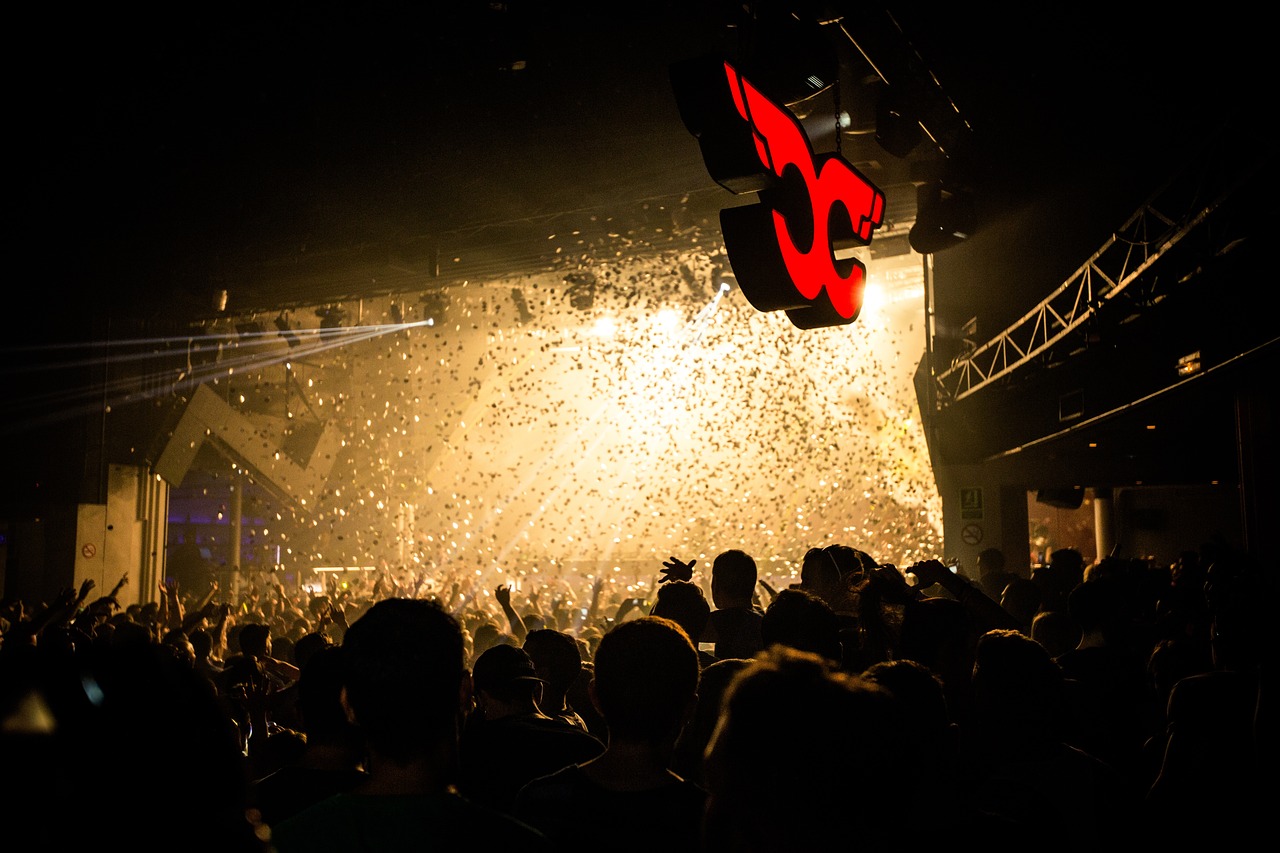
Legacy and Influence
Carl Jung's legacy is like a vast tapestry woven with threads of psychology, art, literature, and spirituality. His ideas have transcended the boundaries of traditional psychology, influencing a myriad of fields and inspiring countless individuals. Jung's concepts, particularly those of the collective unconscious and archetypes, continue to resonate in contemporary culture, making his work as relevant today as it was during his lifetime.
One of the most significant aspects of Jung's influence is his impact on modern psychotherapy. Many therapists incorporate Jungian principles into their practice, recognizing the importance of understanding the deeper layers of the psyche. His emphasis on the *inner self* and the journey of individuation has become a cornerstone of therapeutic methodologies aimed at self-discovery and healing. Jungian therapy often encourages clients to explore their dreams and unconscious motivations, providing a pathway to greater self-awareness and personal growth.
Moreover, Jung's exploration of archetypes has found its way into various forms of art and literature. Writers and artists frequently draw upon Jungian archetypes to create characters and narratives that resonate with universal human experiences. For instance, the archetype of the Hero can be seen in countless stories, from ancient myths to modern films, symbolizing the quest for identity and purpose. Similarly, the Shadow archetype represents the darker aspects of the human psyche, serving as a reminder of the complexities of human nature.
Jung's influence extends beyond the realm of psychology and art; it has also permeated spiritual practices. His interest in spirituality and the mystical aspects of existence led him to explore various religious traditions, and he often emphasized the importance of integrating spirituality into psychological practice. This integration has paved the way for the emergence of transpersonal psychology, a field that focuses on the spiritual dimensions of human experience.
To illustrate Jung's enduring impact, consider the following table that highlights key areas of his influence:
| Field | Key Contributions |
|---|---|
| Psychotherapy | Individuation process, dream analysis, archetypal psychology |
| Literature | Character archetypes, narrative structures, mythological themes |
| Art | Symbolism, exploration of the unconscious, creative expression |
| Spirituality | Integration of psychological and spiritual practices, exploration of religious symbols |
In conclusion, Carl Jung's legacy is not just confined to the pages of psychology textbooks; it lives on in the hearts and minds of those who seek to understand themselves and the world around them. His insights into the human experience have sparked a revolution in how we perceive our inner lives, encouraging a deeper exploration of the self. As we continue to navigate the complexities of modern existence, Jung's teachings serve as a guiding light, reminding us of the richness of our shared human experience.
- What is Carl Jung known for?
Carl Jung is known for founding analytical psychology and introducing concepts such as the collective unconscious, archetypes, and individuation.
- How did Jung differ from Freud?
While Freud emphasized sexuality as the primary driver of human behavior, Jung believed in a broader understanding of human motivation, including spiritual and cultural dimensions.
- What are archetypes?
Archetypes are universal symbols and themes that reside in the collective unconscious, influencing human behavior, art, and storytelling.
- What is the process of individuation?
Individuation is the journey toward self-realization, where individuals integrate different aspects of their personality to achieve psychological wholeness.
Frequently Asked Questions
- What are the main contributions of Carl Jung to psychology?
Carl Jung revolutionized psychology with his concepts of the collective unconscious and archetypes. He emphasized the importance of understanding the deeper layers of the psyche, which include shared human experiences and symbols that transcend individual lives. His ideas have laid the groundwork for modern psychotherapy and continue to influence various fields.
- How did Jung's theories differ from Freud's?
While both Freud and Jung explored the unconscious mind, Jung diverged significantly in his views. Freud focused on sexuality as the primary driver of human behavior, whereas Jung proposed a broader perspective that included spiritual and cultural dimensions. Jung introduced the concept of the collective unconscious, suggesting that there are universal symbols and experiences shared among all people.
- What are archetypes in Jungian psychology?
Archetypes are fundamental, universal symbols or themes present in the collective unconscious. They represent common human experiences and can manifest in various forms, such as the Hero, the Shadow, and the Wise Old Man. Understanding these archetypes can help individuals recognize patterns in their own lives and foster personal growth.
- What is the process of individuation?
Individuation is the journey toward achieving self-realization and psychological wholeness. It involves integrating different aspects of the self, including confronting the Shadow, which represents the darker, unacknowledged parts of our personality. This process is crucial for personal development and is often emphasized in Jungian therapy.
- How has Jung's work influenced modern psychology?
Jung's insights have had a profound impact on contemporary psychology, especially in therapeutic practices. His emphasis on understanding the unconscious, the importance of dreams, and the role of archetypes has enriched psychological approaches, making them more holistic and inclusive of the human experience.
- Can Jungian concepts be applied outside of psychology?
Absolutely! Jung's ideas have permeated various fields, including art, literature, and spirituality. His exploration of archetypes and the collective unconscious provides valuable frameworks for understanding cultural narratives and creative expressions, making his work relevant in many areas of human endeavor.


